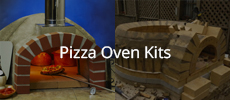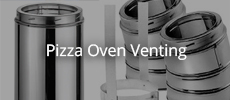Re: Mortar Joints
If you are worried about too big a gap jamb a wedge of brick in there, you should have plenty once you start cutting.
X
-
Re: Mortar Joints
David once again your expertise on this subject is of excellent help.
I have just returned from visiting several suppliers of building materials, some were helpful, some not.
The mixture I have is what they call a glue which is cement based, so I would take it that there is sand present, they recommend it for the purpose I need, I asked them about the max 8mm gap and they said don't worry if it goes over that (well they would wouldn't they, I suppose)
The mixture I tested the other day is solid unlike the mixture with the sand, thereby agreeing with your idea that the weak is too lean.
I also enquired about the Chamonix/ shamot and got puzzled looks, so yep it must be the skiing area in France.
I will endeavour to use this 'glue' with just added water throughout as so far its stuck good, the price is equivalent to about ?10 for 25kgs so not a great wallet breaker.
What would happen if I had a gap say of 25mm (3x the recommended) what would be the detriment?
Once again many thanks for the invaluable information
Paul
Leave a comment:
-
Re: Mortar Joints
It sounds like your fire cement already contains high temperature aggregate added to it i.e. calcium aluminate cement and grog. In which case if you add more sand you will end up with a weaker mortar.That would also explain why they state not to add other materials to it. Usually if the word cement is used it refers to the active ingredient. It should really be labelled high temp refractory mortar to avoid confusion.Originally posted by yorkshireknight View PostThanks for those tips David, the weather is hot above 30 degrees every day, possibly not as hot as it gets 'down under'.
Yesterday I mixed only sand and the fire cement ( possibly as you say with calcium aluminate content, however it does not state on the bag what is contained within only that's its resistant up to 1000 deg C ) I also mixed the cement only with water.
This morning I tried the drop test and the mixture with sand broke,( although before dropping it on a pile of stones it was quite stable) the cement only with water held until the 3rd drop.
As I mentioned before it does state on the bag NOT to be mixed with other building materials.
Today I mixed 4 very, very small batches of the cement and water and did my header course, it was easy to apply and the gaps are all less than 8mm at the back.I have covered it with a tarapaulin to try keep it going off to quick.
Cant post photos yet as my battery on the camera needs charging.
I will endeavour to seek out some fireclay which I believe to be different from the stuff I have, I think its made from Chamonix ?? have you ever heard of this? Maybe it will work better for the home brew mix.
Don't know what Chamonix is apart from skiing in France, but perhaps it is chamotte which is fired and crushed clay also known as grog. This is not really what you want, it will act more as an aggregate. The clay content in the home brew mortar is just to give it some stickiness. Any powdered clay should do.Try to get some bricklayers clay. Sand is quite ok to use in the mortar for the temps we fire to. Sand at high temps ( getting around 1000C can turn to glass, if in the presences of certain fluxes.Last edited by david s; 08-25-2013, 08:45 PM.
Leave a comment:
-
Re: Mortar Joints
Hi Chip, Yes I mixed the mortar inside my tool shed and when working I am under the barn roof, so yes it helps.
My water from the hose pipe flows quite hot for 2/3minutes before the cold starts to come through, maybe I shall be more aware of that now.
Leave a comment:
-
Re: Mortar Joints
Something I did on very hot days was to have cold water available for mixing, a pitcher filled with ice and water with a strainer lid so I did not get ice in the mortar, I also kept the dry mortar mix out of the sun so it stayed cooler. It gave me a few more minutes to work the mixed mortar.
Leave a comment:
-
Re: Mortar Joints
Thanks for those tips David, the weather is hot above 30 degrees every day, possibly not as hot as it gets 'down under'.
Yesterday I mixed only sand and the fire cement ( possibly as you say with calcium aluminate content, however it does not state on the bag what is contained within only that's its resistant up to 1000 deg C ) I also mixed the cement only with water.
This morning I tried the drop test and the mixture with sand broke,( although before dropping it on a pile of stones it was quite stable) the cement only with water held until the 3rd drop.
As I mentioned before it does state on the bag NOT to be mixed with other building materials.
Today I mixed 4 very, very small batches of the cement and water and did my header course, it was easy to apply and the gaps are all less than 8mm at the back.I have covered it with a tarapaulin to try keep it going off to quick.
Cant post photos yet as my battery on the camera needs charging.
I will endeavour to seek out some fireclay which I believe to be different from the stuff I have, I think its made from Chamonix ?? have you ever heard of this? Maybe it will work better for the home brew mix.
Leave a comment:
-
Re: Mortar Joints
The calcium aluminate cement, just mixed with sand will go off quite quickly compared to a mortar using Portland cement. You need to keep making small batches of the stuff. If it's hot or you add lime the stuff may even start to go off by the time you have just finished mixing it. This is one reason why the Portland cement, lime and clay brew is superior for WFO building. The other reason is that calcium aluminate cement is really expensive. If you are still keen to use the stuff, here are another couple of tricks I've learnt. If your barrow is hot because it's been standing in the sun, hose it off and stand it in the shade for 5 or 10 mins. It will cool off really well. Do not leave the cement or the sand to be added in the sun either. If you've made a batch and are ready to make some more, hose out your barrow shovel and trowel. Traces of the previous brew that has gone off will act as an accelerant for the subsequent one. This problem also occurs if making batches of plaster of Paris or fiberglass resin by the way.
Leave a comment:
-
Re: Mortar Joints
Ok first I apologise for putting my IT etc on this mortar thread page, I mistakingly placed it here instead of my build thread.
But thank you all for your help, the IT I will redesign to do as you suggest point to the middle etc.
The cement /clay problem is now clearer thanks to your explanations (for the 3rd time)
It needs to be made clearer the distinct difference between the two names so the right one can be sought for the home brew. I thought fire cement, refractory and clay cement were all the same thing, here it is confused more because they call it a glue.
Thanks David maybe the weather is too hot for when I mixed my cement/glue to go off so quick.
Leave a comment:
-
Re: Mortar Joints
David is right about refractory cement as this is what I used. You need only get sand and fire clay. If you cannot get fire clay you will get enough from cutting your floor just sift it to get a fine powder once the clay is dry. You have cement you do not now need to go and buy Portland cement and lime it is not necessary.Last edited by oasiscdm; 08-23-2013, 06:32 PM.
Leave a comment:
-
Re: Mortar Joints
Also, the calcium aluminate cement is quite temperature dependent, more so than Portland. In the summer I have to add chilled water to give me enough working time.
Leave a comment:
-
Re: Mortar Joints
David is right. You have fire cement use it without lime as this is what I used. You need only get sand and fire clay. If you cannot get fire clay you will get enough from cutting your floor just sift it to get a fine powder once the clay is dry.Last edited by oasiscdm; 08-23-2013, 04:10 PM.
Leave a comment:
-
Re: Mortar Joints
No, reread my post. I'm saying you should not use the fire cement with the lime. I think the plans show an alternative recipe that includes calcium aluminate cement, sand, fireclay and lime. I have warned about this error many times, but maybe the changes still have not been made. Stick to the Portland cement recipe, or if you want to use the fire cement the recipe should omit the lime component.Originally posted by yorkshireknight View PostYes I can get Portland cement David and I've sourced lime as of today.
So are you saying I can use the home brew with this 1000 deg C fire cement I have?
I will purchase some Lime and fine sand and give the home brew another go.
I did attempt the home brew but it was with a sand/lime premixed, but it failed to work.
Thanks for the that anyway David
Paul
Leave a comment:
-
Re: Mortar Joints
Paul
Ditto DJ on the IT. It wont work. The shaft of the IT should contact the center of the brick vertically and horizontally. The 2x4 is too wide and not offset enough for the brick to be centered vertically. Also, a cheap clamp will help hold the brick in the proper alignment as you set it and squish into place. That caster is fine; looks like what i used. i would cover the bearings of the caster with tape or something to keep mortar out. Mortar will lock it up and it wont move. The caster changes the dome curve slightly, but not enough to worry about unless you want to recess it in your floor by removing a floor brick and replace it later. I dont think that is necessary, but that is how you would do it.
I think what Dave is saying is if you can make homebrew you do not need the fire cement. Homebrew is proven is cheap to make.
Tex
Leave a comment:
-
Re: Mortar Joints
That IT design won't work. The arm of your IT needs to hit the center of the brick on each course.
See this post for explanation: http://www.fornobravo.com/forum/8/tr...tml#post132328
Leave a comment:
-
Re: Mortar Joints
Today I made my IT from a castor wheel and a piece of wood.
I think I may have to exchange the big lump underneath for a slimmer one, it is at a 90 deg angle to the top part should this be so?
I also made the template for the arch many thanks to those who gave me some idea how to do it, geometry is all Greek to me.
I am nearly ready for sticking bricks together (when I learn how)
as always if you see anything out of order please feel fee to criticise.
Paul
PS a picture of the fire cement I bought.4 Photos
Leave a comment:





Leave a comment: